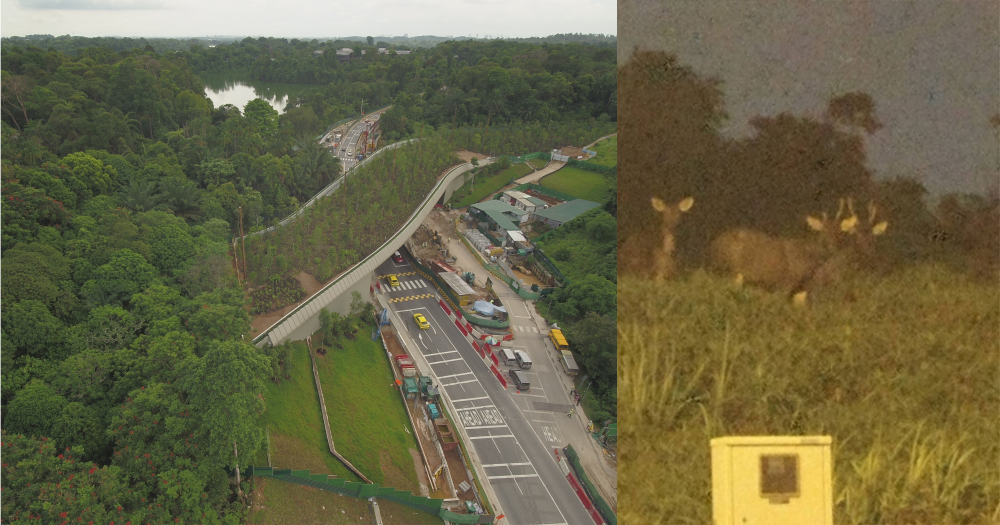It has been 60 years since the pristine Central Catchment Nature Reserve (CCNR) was cut into two by Mandai Lake Road.
The road was constructed just to make the Singapore Zoo and Night Safari more accessible for visitors.
On Dec. 6, a 140m wildlife bridge connecting the buffer areas of the two fragmented CCNR forest patches finally opened after two years of construction.
The bridge was launched by Minister for Social and Family Development and Second Minister for National Development, Desmond Lee, Chairman of Mandai Park Holdings, S. Dhanabalan, Group CEO of Mandai Park Holdings, Mike Barclay, and Member of Mandai’s Environmental Advisory Panel (EAP), Er Lim Peng Hong.
Mandai Wildlife Bridge opens for animal crossing
The Mandai Wildlife Bridge is part of the Mandai Rejuvenation Project.
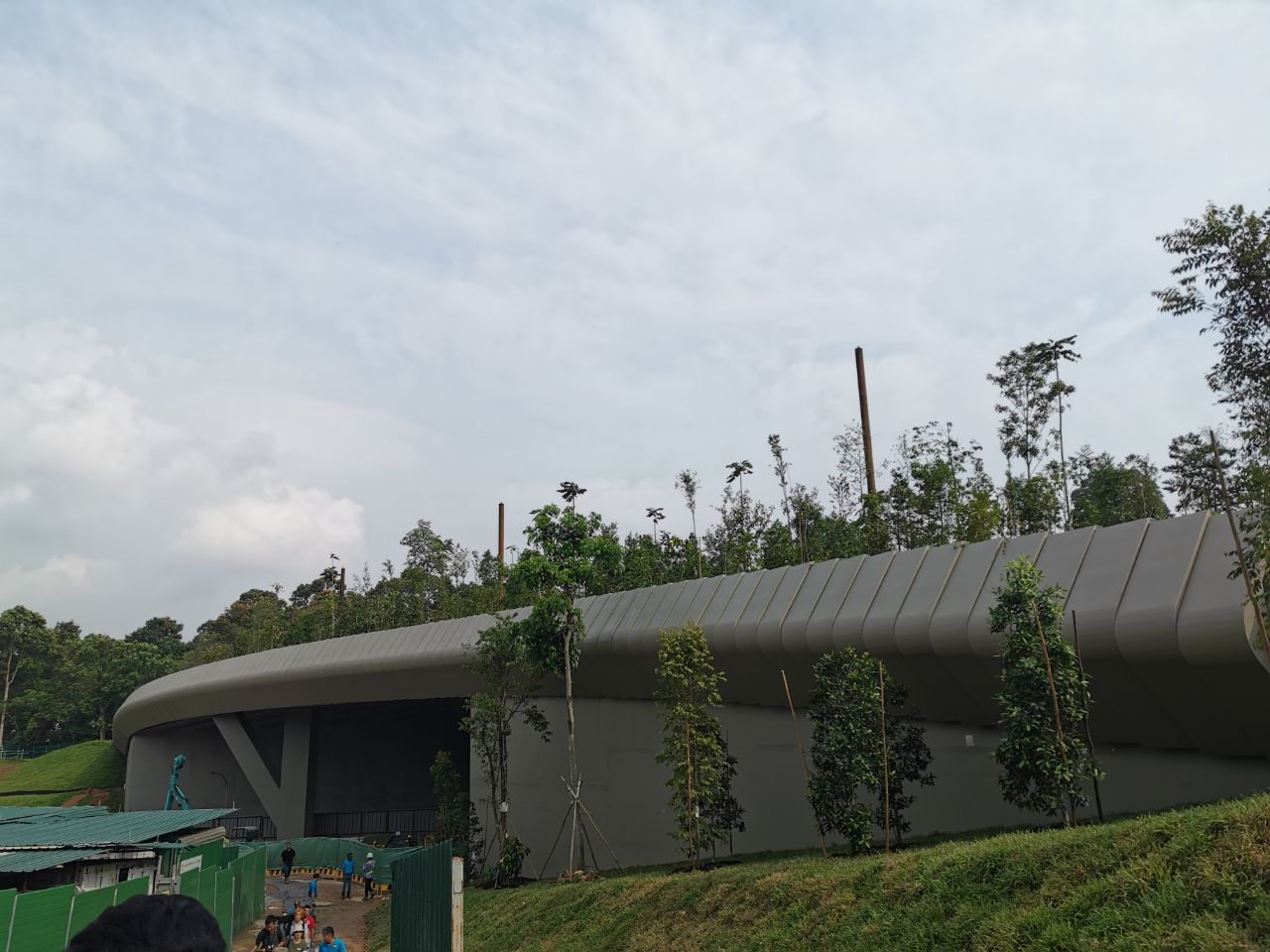 Photo by Zheng Zhangxin.
Photo by Zheng Zhangxin.
The Mandai Rejuvenation Project has gained criticism from nature lovers since its inception in 2017.
That's because the nature community has concerns about the potential disturbance and destruction the project will have on the flora and fauna in the CCNR.
While these criticisms did not prevent the development project, the developer, Mandai Park Holdings, expressed their commitment to carry out the construction works in an environmentally-sustainable and sensitive manner.
That includes building this bridge to improve the connectivity for wildlife in this area.
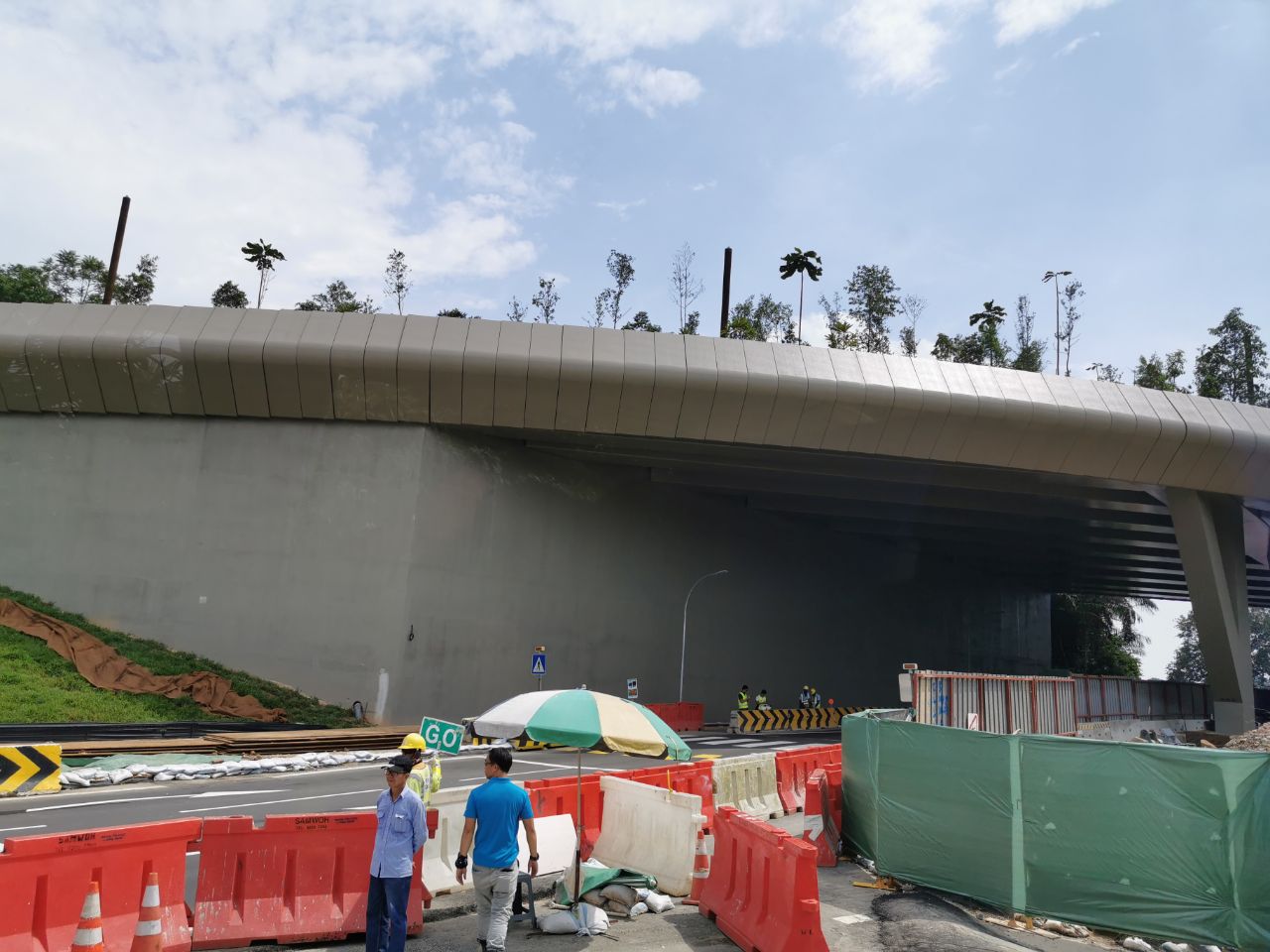 Photo by Zheng Zhangxin.
Photo by Zheng Zhangxin.
Key milestone in Mandai precinct
According to Barclay, the bridge was "intentionally planned" to be opened well ahead of other project features and is a "key milestone" for the precinct.
Native animals have always moved between the nature reserve forests to the north and south of Mandai Lake Road.
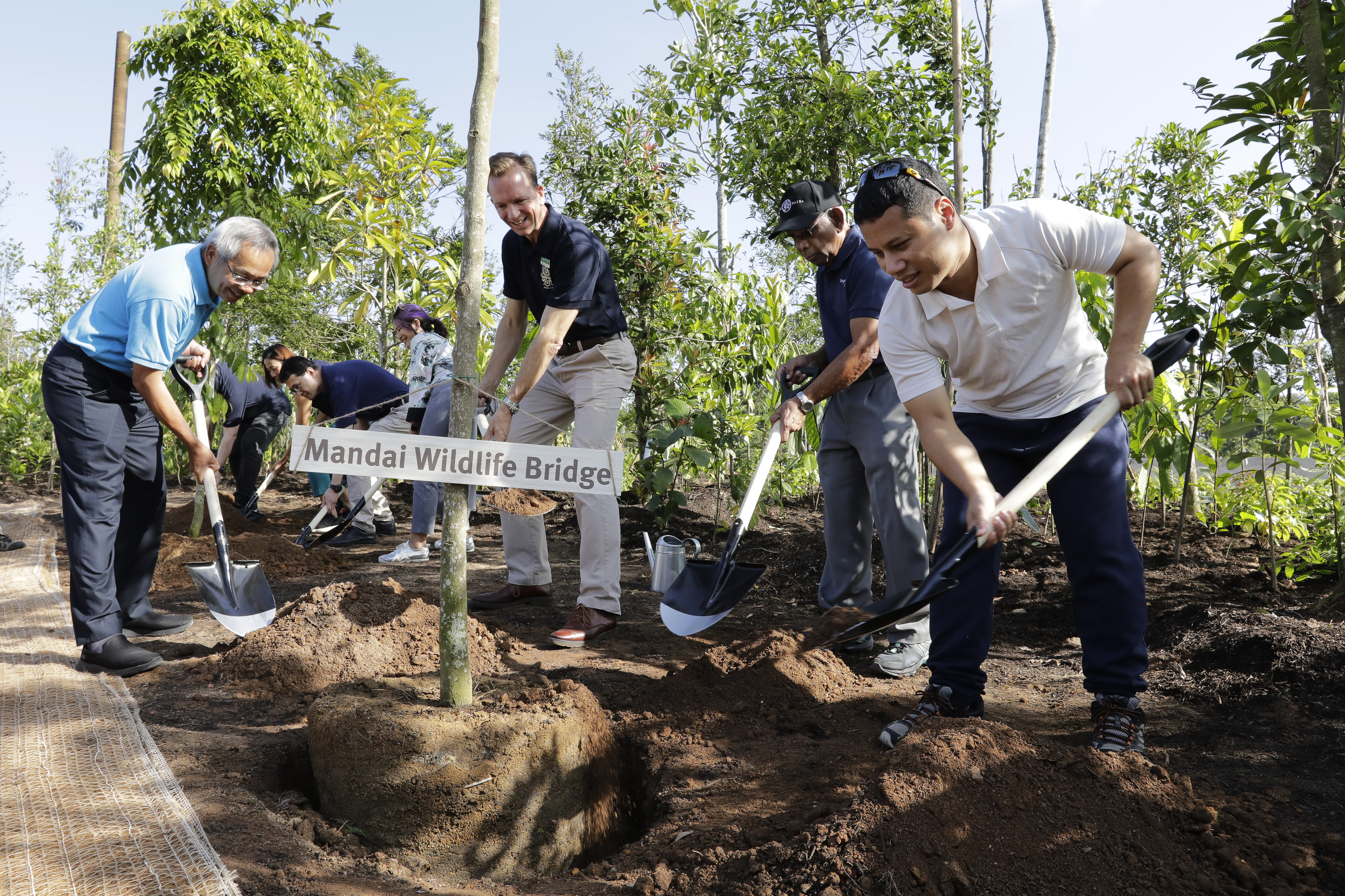 Photo from Mandai Park Holdings.
Photo from Mandai Park Holdings.
In a phone interview with another EAP member, Shawn Lum, who is also the president of Nature Society, Lum said that Mandai Park Holdings has the most comprehensive measures to minimise the environmental risk in the precinct as a result of the development.
Improving connectivity between forested fragments is important to maintain the gene pool, reduce roadkill and the chances of in-breeding for wildlife.
He also lauded the developer's efforts to educate motorists in the area through road signage that warn them about animal crossings along Mandai Lake Road.
As Singapore becomes more urbanised, the competition for space between people and wildlife will be greater and possibly lead to increased human-wildlife conflict.
Therefore, a wildlife bridge can also be helpful in other areas in Singapore with higher incidence of roadkill such as Thomson and Yio Chu Kang areas, Lum suggested.
Key features of the bridge
The bridge is between 35m and 44m wide, widening up at the two ends of the bridge so as to soften the edges. This is expected to appeal to aerial, arboreal, and terrestrial animals.
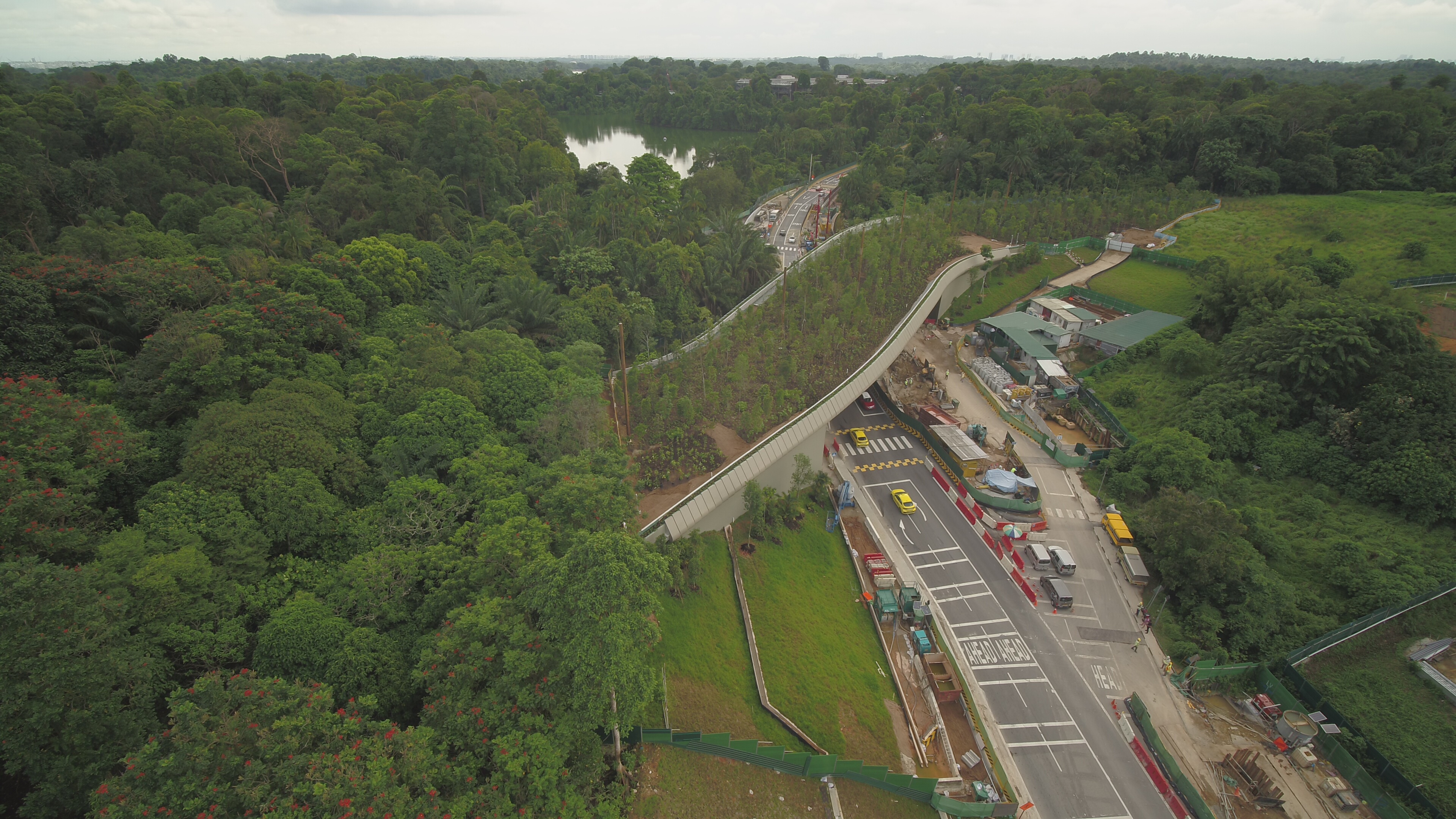 Photo from Mandai Park Holdings.
Photo from Mandai Park Holdings.
On the bridge, there are over 31,000 plants, including more than 1,000 native trees spanning 25 species and more than 30,000 shrubs from eight species.
The intent is to create a multi-layer forest structure to make the bridge welcoming for passing animals to use.
For example, shy, forest-dependent animals such as the shrew-faced ground squirrel and short-tailed babbler will require some vegetation cover to move across the area.
Fruit and flowering trees can facilitate the movement of small and large birds while nectar bushes and shrubs can draw butterflies and insects.
Other animals expected to use the bridge include civet cats, wild boars, sambar deer, pangolins and colugos.
To facilitate the movement of the colugos, also known as the flying lemurs, there are six colugo poles on the bridge of varying heights of 10m, 12m, and 15m for them to glide from one pole to another across the bridge.
 Photo by Zheng Zhangxin.
Photo by Zheng Zhangxin.
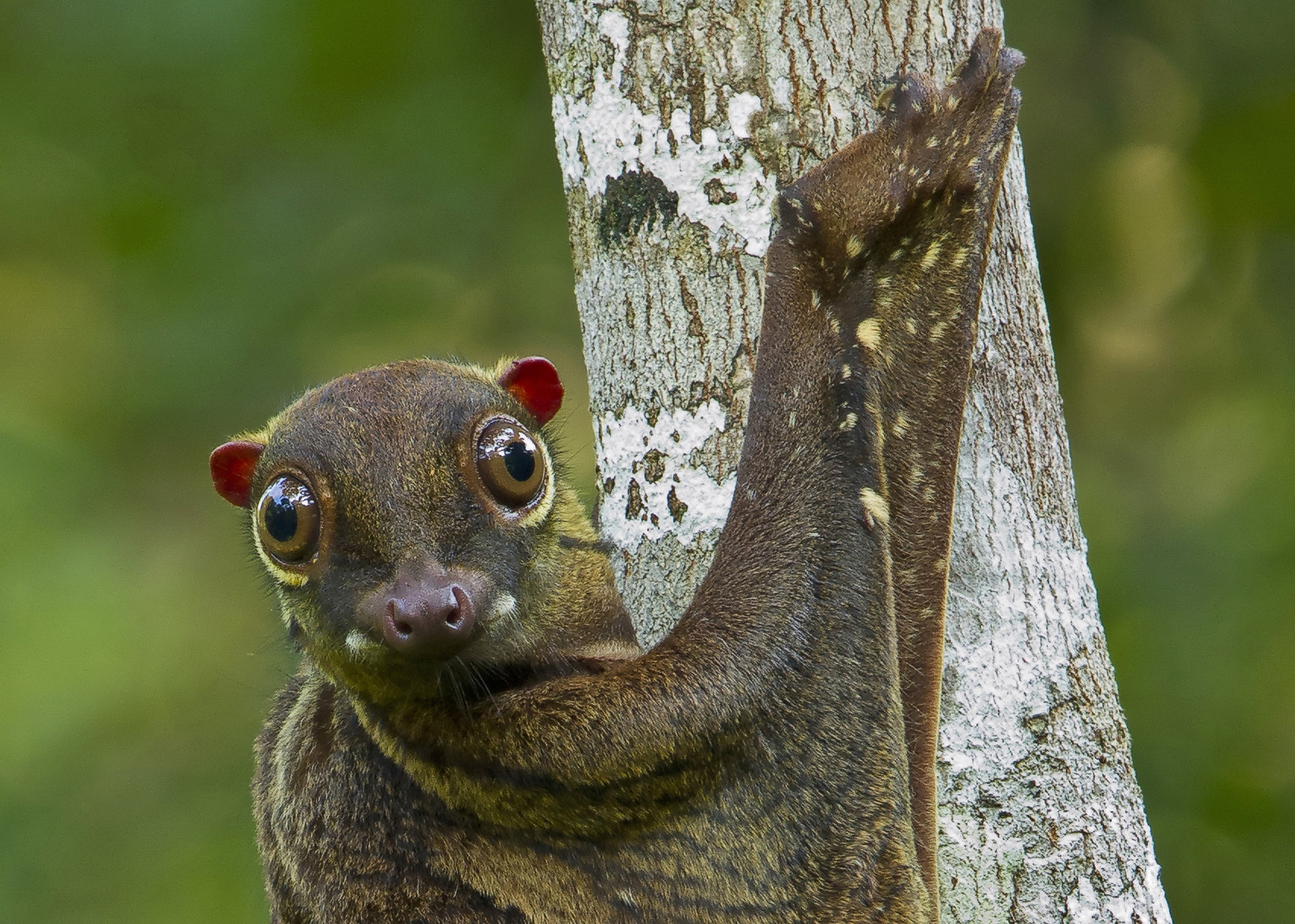 Photo via Getty Images.
Photo via Getty Images.
Permanent fencing is erected along Mandai Lake Road to guide animals at the buffer zone (background of the photo behind the green fence) towards the bridge.
Wildlife surveys and monitoring via camera traps have been conducted since 2017 in the buffer zones to identify the wildlife present in the area.
Another six wildlife monitoring cameras will be installed on the bridge to observe the animal movements across it.
Top photo from Mandai Park Holdings and Nadduz/Facebook
If you like what you read, follow us on Facebook, Instagram, Twitter and Telegram to get the latest updates.
